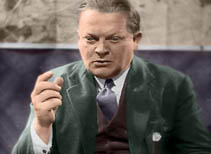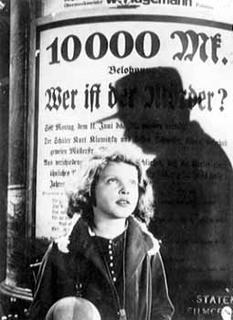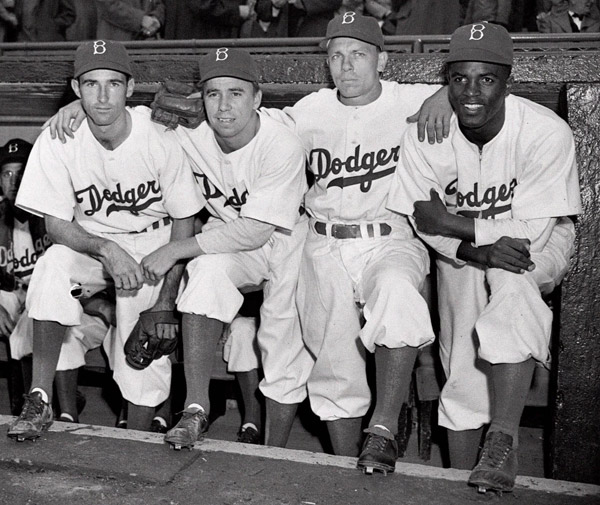

Is a hero someone who acts out of character and does something courageous, or is a hero someone who responds to the call of duty and does what he has to do, time and time again, despite any obstacles in his way? Luckily, when debating the heroic status of Will Kane, the protagonist of High Noon, we need not decide the definition of a hero or whether will fits into one of those two definitions. This is because Will Kane is a combination of the two.
It is clearly shown that Will is devoted to his job, protecting his town of Hadleyville. Although he is no longer the Marshal he still feels his responsibility to the town and to himself. Will could have easily run away and leave the town to deal with Frank Miller however they saw fit. However, Will had worked so hard to turn the town around and transform it from a place where women couldn’t walk the streets in broad daylight into a peaceful and prosperous town. He couldn’t just hide at the first sign of trouble. When Amy wonders why Will has to return, she fails to realize that her new husband has never run from anything in his life. Amy begs Will, “Don't try to be a hero! You don't have to be a hero, not for me!” The fact is that Will isn’t trying to be a hero. He’s justTechnically, Will “emerges” as a hero when he and his town are faced with a potentially destructive situation involving an infamously destructive man (Frank Miller). However, we know that Will and his heroic traits were shown and existed before the time that is presented in the film. It is stated more than once that Will was a type of savior for Hadleyville, that he made the streets walkable and the lives of the people livable.
No other character in the film responds in the way that Will responds. For that mater, no one acts like Will does. That’s why in the end he’s left alone on the lonely streets. However, Katy Jurado’s character, Helen Ramirez, has a heroic air about her. She speaks about loyalty when she says to Amy, “If Kane was my man, I'd never leave him like this. I'd get a gun. I'd fight.” Her sentiments are heroic but her actions do not necessarily show heroism.
When I saw High Noon I couldn’t help but picture Roger O. Thronhill (Cary Grant), from North by Northwest, when I saw Will Kane (Gary Cooper). Both characters are forced into loneliness and solitude by others. No one seems to understand them or their cause. Despite all this, they both triumph through adversity and achieve the “impossible task” whether it’s killing the four bad guys in High Noon or evading death and killing the criminals in North by Northwest. And after it all both Will and Roger come out with the girl by their side. doing what he feels is right and there is nothing more heroic than that.
On another note, this instance, when Will turns the stagecoach around, reveals his naivety, stubbornness, and courage, three of the strongest qualities of a hero. Those three traits that Will, as a hero, possesses exemplify his strength as a heroic character but they also define his weakness in terms of the other layers that make up Will Kane. For example, when Will and Amy are wed, Will is willing to give up his role as a man of law and order for her, but he changes his mind and has to return to fulfill his “duty”. His stubbornness helps him save the town but at the same time it puts his new marriage and even his own life at risk.

 At this point in the film, we have an understanding that the criminals union and the police are after the same thing. Obviously, considering the backgrounds of the respective groups, we assume that they’re going to go about the process of catching Mr. Beckert with some different methods.
However from these two parallel shots, Lang shows that the plans the police make and the plans that the criminals craft are not as different as we might think. From this shot we see that both groups have a very methodical way about their process. However, we also see a difference in the way that the two groups approach the situation. In one shot Shranker, we see a hand, covered by a black leather glove, over the map. By just looking at this shot and not having seen the previous frames, the audience knows this symbol as a representation of Shranker and the criminals. This is due to Lang’s use of metonymy. In addition to showing, by use of symbols, the perspective of this frame, we can also read the approach that Shranker and his men take, that of a very “hands on” approach. He is signifying the way in which the criminals will go about completing their mission. And later on in the film we see that in fact they do employ that “hands on” approach that is exemplified here.
In contrast is the overhead view of the map that the police are looking at. All that Lang shows in this shot is the compass and the circles that it, an inanimate object, creates. Unlike in the frame of the criminals’ map, we don’t actually see any human contact with the situation. Lang shows that the police are not “hands on” like the criminals. Rather, they are removed from the circumstances. One could argue that because the police go directly to the root of the evil, Beckert’s apartment, they too take a “hands on” approach. However, their techniques are not as direct as those of the criminals. The criminals are out on the street, cautiously keeping an eye out for anything or anyone that could be a clue. They make the first move, they operate the preemptive strike, while the police, although they pursue Beckert, make one move and then sit around while he comes to them. The criminals go to Beckert and that is why they are successful. We can see from this one frame that there is something separating the police from Beckert.
While the criminals go about the problem directly, the police approach it from a detached standpoint. Whereas the criminals go and physically hunt down Beckert and make the first move, the police go to a spot where he could be heading and wait for him to make the first move. The police also pursue Beckert actively but from a more detached angle and from a different side of the conflict. The criminals close in on Beckert from one direction while the police come in from the polar side. Shranker’s approach was not better than the approach of the police, but it was swifter and happened to work more successfully in this instance.
At this point in the film, we have an understanding that the criminals union and the police are after the same thing. Obviously, considering the backgrounds of the respective groups, we assume that they’re going to go about the process of catching Mr. Beckert with some different methods.
However from these two parallel shots, Lang shows that the plans the police make and the plans that the criminals craft are not as different as we might think. From this shot we see that both groups have a very methodical way about their process. However, we also see a difference in the way that the two groups approach the situation. In one shot Shranker, we see a hand, covered by a black leather glove, over the map. By just looking at this shot and not having seen the previous frames, the audience knows this symbol as a representation of Shranker and the criminals. This is due to Lang’s use of metonymy. In addition to showing, by use of symbols, the perspective of this frame, we can also read the approach that Shranker and his men take, that of a very “hands on” approach. He is signifying the way in which the criminals will go about completing their mission. And later on in the film we see that in fact they do employ that “hands on” approach that is exemplified here.
In contrast is the overhead view of the map that the police are looking at. All that Lang shows in this shot is the compass and the circles that it, an inanimate object, creates. Unlike in the frame of the criminals’ map, we don’t actually see any human contact with the situation. Lang shows that the police are not “hands on” like the criminals. Rather, they are removed from the circumstances. One could argue that because the police go directly to the root of the evil, Beckert’s apartment, they too take a “hands on” approach. However, their techniques are not as direct as those of the criminals. The criminals are out on the street, cautiously keeping an eye out for anything or anyone that could be a clue. They make the first move, they operate the preemptive strike, while the police, although they pursue Beckert, make one move and then sit around while he comes to them. The criminals go to Beckert and that is why they are successful. We can see from this one frame that there is something separating the police from Beckert.
While the criminals go about the problem directly, the police approach it from a detached standpoint. Whereas the criminals go and physically hunt down Beckert and make the first move, the police go to a spot where he could be heading and wait for him to make the first move. The police also pursue Beckert actively but from a more detached angle and from a different side of the conflict. The criminals close in on Beckert from one direction while the police come in from the polar side. Shranker’s approach was not better than the approach of the police, but it was swifter and happened to work more successfully in this instance.





